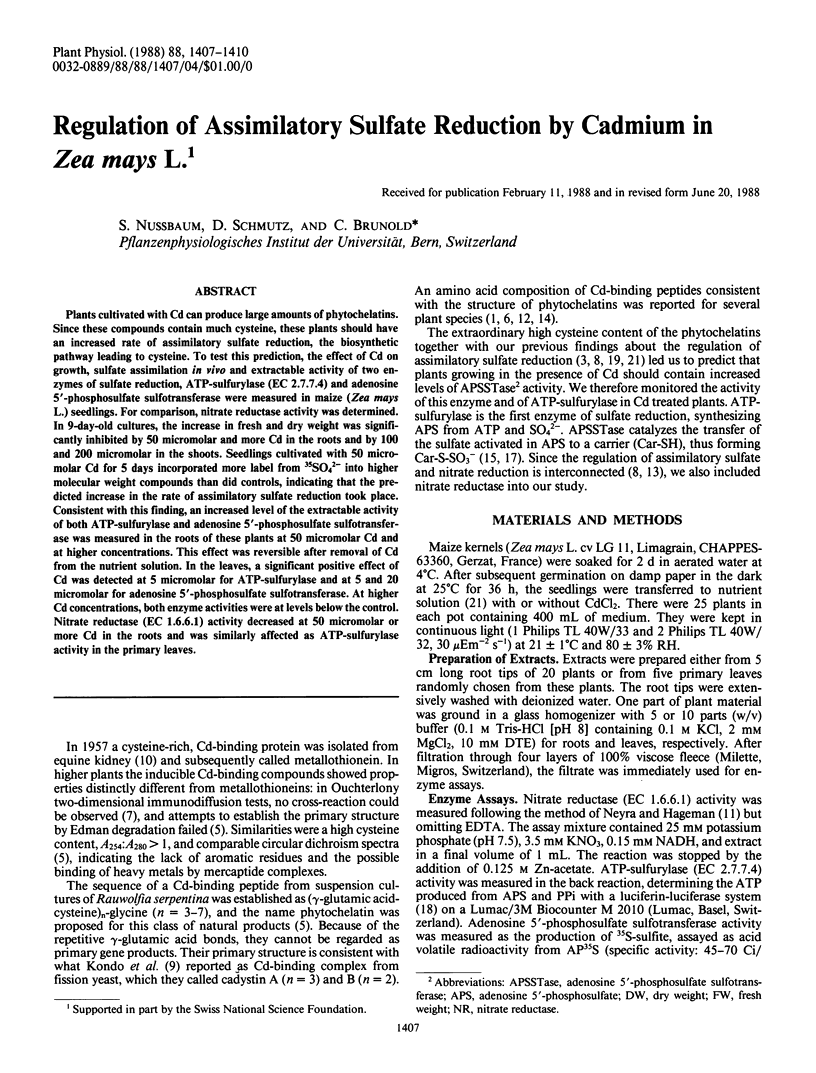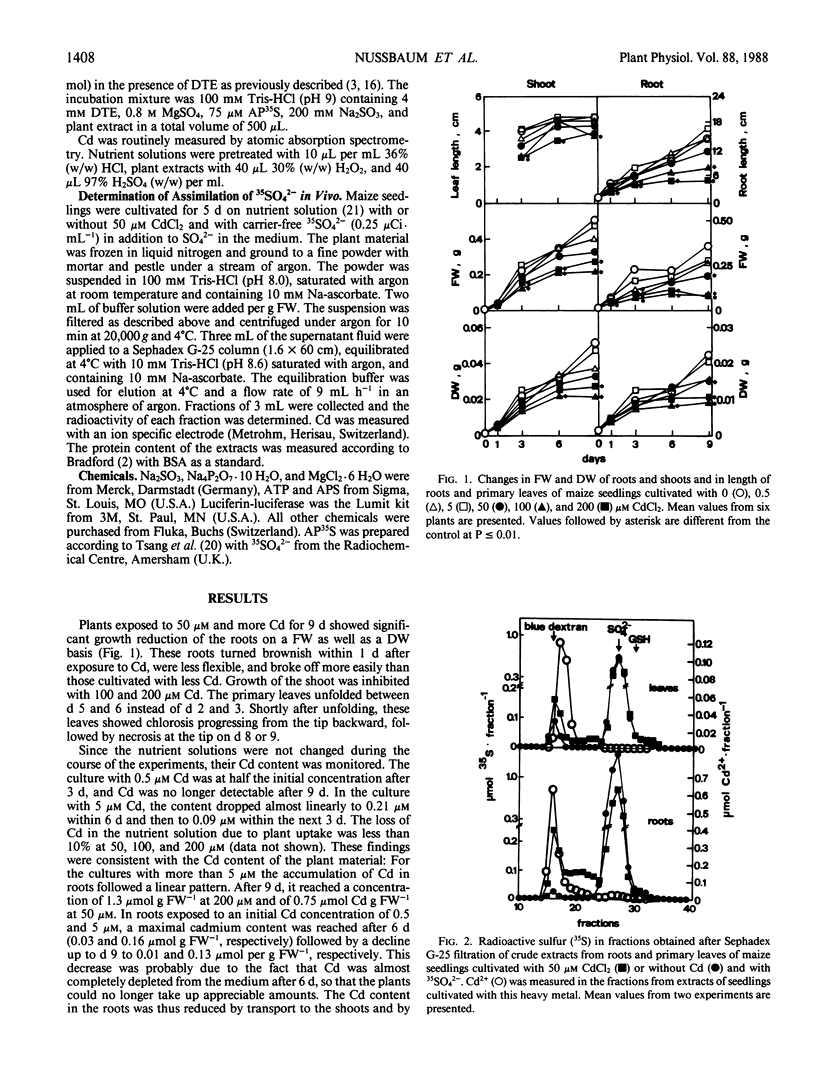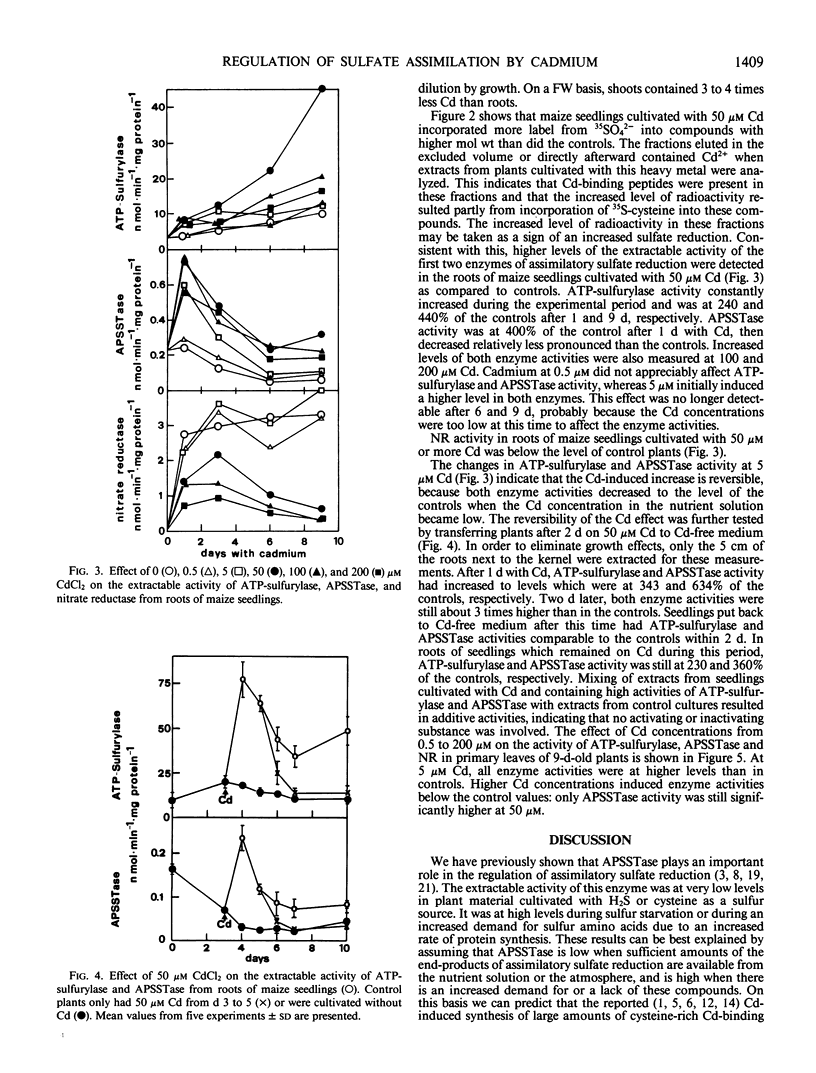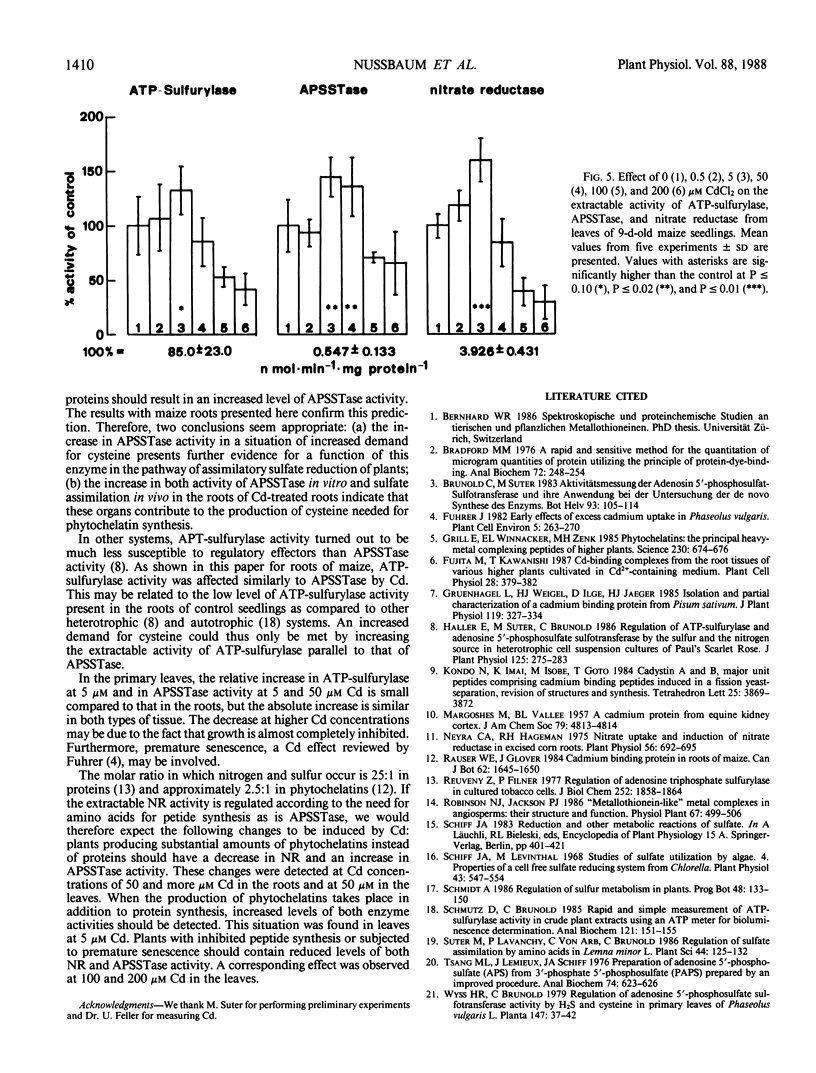Abstract
Plants cultivated with Cd can produce large amounts of phytochelatins. Since these compounds contain much cysteine, these plants should have an increased rate of assimilatory sulfate reduction, the biosynthetic pathway leading to cysteine. To test this prediction, the effect of Cd on growth, sulfate assimilation in vivo and extractable activity of two enzymes of sulfate reduction, ATP-sulfurylase (EC 2.7.7.4) and adenosine 5′-phosphosulfate sulfotransferase were measured in maize (Zea mays L.) seedlings. For comparison, nitrate reductase activity was determined. In 9-day-old cultures, the increase in fresh and dry weight was significantly inhibited by 50 micromolar and more Cd in the roots and by 100 and 200 micromolar in the shoots. Seedlings cultivated with 50 micromolar Cd for 5 days incorporated more label from 35SO42− into higher molecular weight compounds than did controls, indicating that the predicted increase in the rate of assimilatory sulfate reduction took place. Consistent with this finding, an increased level of the extractable activity of both ATP-sulfurylase and adenosine 5′-phosphosulfate sulfotransferase was measured in the roots of these plants at 50 micromolar Cd and at higher concentrations. This effect was reversible after removal of Cd from the nutrient solution. In the leaves, a significant positive effect of Cd was detected at 5 micromolar for ATP-sulfurylase and at 5 and 20 micromolar for adenosine 5′-phosphosulfate sulfotransferase. At higher Cd concentrations, both enzyme activities were at levels below the control. Nitrate reductase (EC 1.6.6.1) activity decreased at 50 micromolar or more Cd in the roots and was similarly affected as ATP-sulfurylase activity in the primary leaves.
Full text
PDF



Selected References
These references are in PubMed. This may not be the complete list of references from this article.
- Bradford M. M. A rapid and sensitive method for the quantitation of microgram quantities of protein utilizing the principle of protein-dye binding. Anal Biochem. 1976 May 7;72:248–254. doi: 10.1016/0003-2697(76)90527-3. [DOI] [PubMed] [Google Scholar]
- Grill E., Winnacker E. L., Zenk M. H. Phytochelatins: the principal heavy-metal complexing peptides of higher plants. Science. 1985 Nov 8;230(4726):674–676. doi: 10.1126/science.230.4726.674. [DOI] [PubMed] [Google Scholar]
- Neyra C. A., Hageman R. H. Nitrate uptake and induction of nitrate reductase in excised corn roots. Plant Physiol. 1975 Nov;56(5):692–695. doi: 10.1104/pp.56.5.692. [DOI] [PMC free article] [PubMed] [Google Scholar]
- Reuveny Z., Filner P. Regulation of adenosine triphosphate sulfurylase in cultured tobacco cells. Effects of sulfur and nitrogen sources on the formation and decay of the enzyme. J Biol Chem. 1977 Mar 25;252(6):1858–1864. [PubMed] [Google Scholar]
- Schiff J. A., Levinthal M. Studies of sulfate utilization by algae. 4. Properties of a cell-free sulfate-reducing system from chlorella. Plant Physiol. 1968 Apr;43(4):547–554. doi: 10.1104/pp.43.4.547. [DOI] [PMC free article] [PubMed] [Google Scholar]
- Schmutz D., Brunold C. Rapid and simple measurement of ATP-sulfurylase activity in crude plant extracts using an ATP meter for bioluminescence determination. Anal Biochem. 1982 Mar 15;121(1):151–155. doi: 10.1016/0003-2697(82)90569-3. [DOI] [PubMed] [Google Scholar]
- Tsang M. L., Lemieux J., Schiff J. A., Bojarski T. B. Preparation of adenosine 5'-phosphosulfate (APS) from adenosine 3'-phosphate 5'-phosphosulfate (PAPS) prepared by an improved procedure. Anal Biochem. 1976 Aug;74(2):623–626. doi: 10.1016/0003-2697(76)90249-9. [DOI] [PubMed] [Google Scholar]


